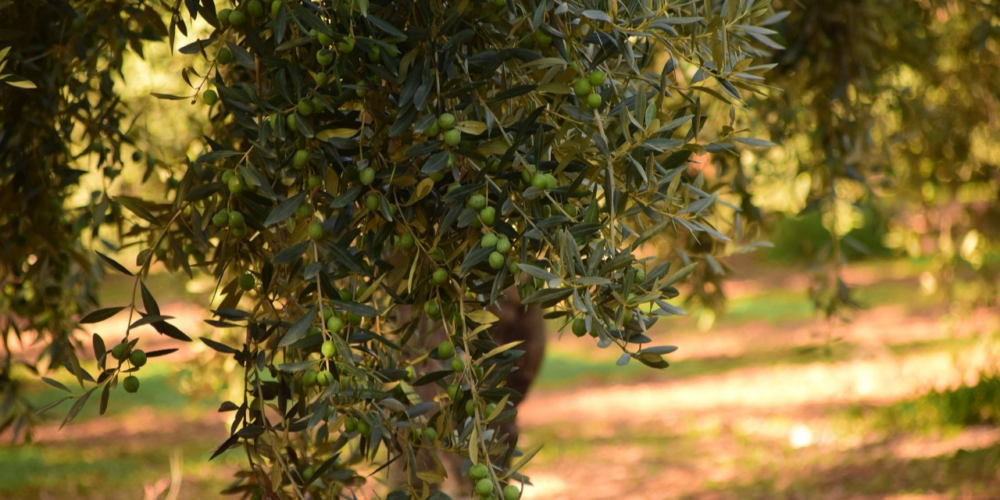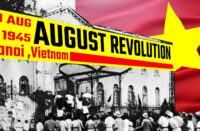A recent series of blog posts on the website of Verso Books, acclaimed publisher on the left, attracted a lot of attention online. Andreas Malm, best known for his excellent analysis of the capitalist systems of climate emergency, started this series off with his long and informative essay “The Destruction of Palestine Is the Destruction of the Earth”. In response to Malm, Israeli academic and left activist Matan Kaminer wrote “After the Flood: A response to Andreas Malm”. The final part of the series to date is Malm’s response to Kaminer, titled “Standing with the Palestinian resistance: A response to Matan Kaminer”. Here we provide an overview of the debate from the environmental angle.
Malm’s original essay (originally delivered as a lecture at the American University of Beirut) is a tour de force in connecting local with global issues, short-term dynamics with those of the long term, and recognising feedback loops that reinforce the rise of systems of capital worldwide, and lead to exploitation, destruction and death. As such, “The Destruction of Palestine Is the Destruction of the Earth” is an excellent read for Marxists interested in the coupling of environmental struggles and settler colonialism. It is also an important antidote against many vulgar interpretations of Palestinian geopolitics. It gives depth and the necessary economic interpretation to the resource-grab in the land and sea of Palestine, and it takes a strong position against the idea that the US and the West are controlled by an Israeli-Zionist lobby engaging in irrational geopolitics of colonial violence. Malm gives a solid sketch of the opposite mechanism, that of Israel as the logical consequence of Western structures of power and capital.
In a compelling narrative on the coupling of the Zionist project and fossil fuel-powered British colonialism, Malm takes the reader back to 1840, and proceeds with the British economic and military interests in the Middle East, the uptick of Christian Zionism in Britain spearheaded by the Earl of Shaftesbury (which title many of us today connect to the ecological catastrophe of Lough Neagh), and the myth of “the land without people” in Palestine. Here Malm makes the claim that “Zionism first existed at the level of superstructure, on the base of the fossil empire.” Zionism the idea coincided with the steam engines of the British Empire storming into the Middle East. When the idea developed into an actionable practice decades later, it had the material grounds to run on.
“But settler colonialism in Palestine”, continues Malm, “never stood on its own feet and never could have.” The support this project has had from imperialist forces in the West is endemic to its structure, rather than an ad hoc action. Malm maps the fossil fuel connections of Israel in brief: not just the new reserves for exploitation in the waters of Palestine and Lebanon, but also the pipeline projects with surrounding collaborator Arab monarchies. Again, it is impossible to restrict the global fossil capital flow; the Middle East remains the playground of British Petrol as well, and Israeli companies exploit fossil fuel sources in the North Sea, the home turf of British Petrol as well.
In telling this story of exploitation, environmental destruction, and imminent climate change (invoking the imagery of massive, deadly floods in Libya in September 2023), Malm is uncompromising in his recognition of resistance to the settler colonial project as the only viable solution, and as the actionable outcome of his Marxist analysis. He doesn’t shy away from giving his perspective on Toufan al-Aqsa (Al-Aqsa Flood), and from removing any doubt of his absolute support for the resistance at the end of the essay. This is the point of departure for Matan Kaminer’s response to Malm: whom does Malm support when he supports the resistance?
Kaminer’s piece is short, and from the environmental point of view (which is our priority for this article, at least) it raises the points of (1) Iranian capital supporting the resistance having a fossil fuel origin, and (2) the Palestinian resistance not having a clear environmental position. On the latter, Kaminer points out that Hezbollah had no issues with new fossil fuel exploitation plans in Lebanon—hence it would be expected that Hamas would do the same in a hypothetical post-war situation. The crux of Kaminer’s argument is that Malm’s support for the resistance in absolute terms should be traded for a critical support.
Malm does not concede: in his response to Kaminer, he makes an attempt of a grounded analysis of the present state of the Palestinian resistance, grounding it in materialist terms rather than “a psychic phenomenon fuelled by fears and fantasies about demons”, as he describes the liberal discourse on Hamas in particular. To the points on environmentalism, Malm again assumes a dialectical position, and invokes the historical example of World War 2, and the defeat by the Soviet Union of the fossil fuel-powered Nazi Holocaust project, among other things having fossil fuel “mobilised for survival and liberation.” Malm is clear: “I don’t see how we could wish for the funding of the resistance to be severed.” In a world where everything is sullied with fossil fuels, the odds are that any good developments will bear marks of it as well. In terms of the ecological vision of the resistance, Malm also remains steadfast. “Injecting climate consciousness into Palestinian and other struggles in the Middle East is a necessary historical mission, but it cannot deflect from the immediate defence of the existence and rights of the Palestinian people.”
Thanks to Kaminer’s prompts, Malm developed his arguments in a direction the original essay could not accommodate, thematically and format-wise. Thus, this exchange as a whole is a worthwhile read both in the context of relations of Palestine, capital, and climate and as a valuable example of clear critical, materialist analysis. In the third part, Malm writes “I came to climate through Palestine.” I hope the climate-to-Palestine pipeline (one worth keeping and not blowing up, to paraphrase Malm’s bestseller) keeps bringing comrades closer, recognising one common, joint struggle.






